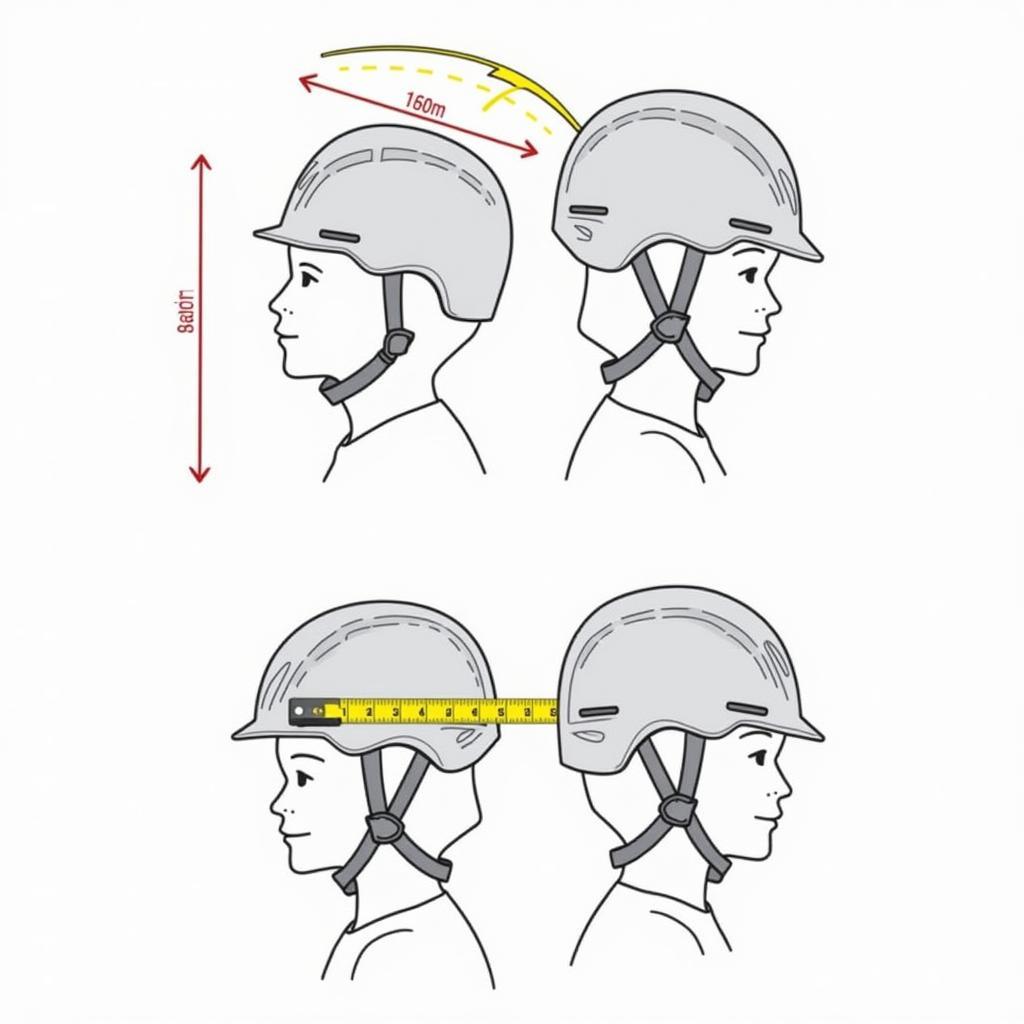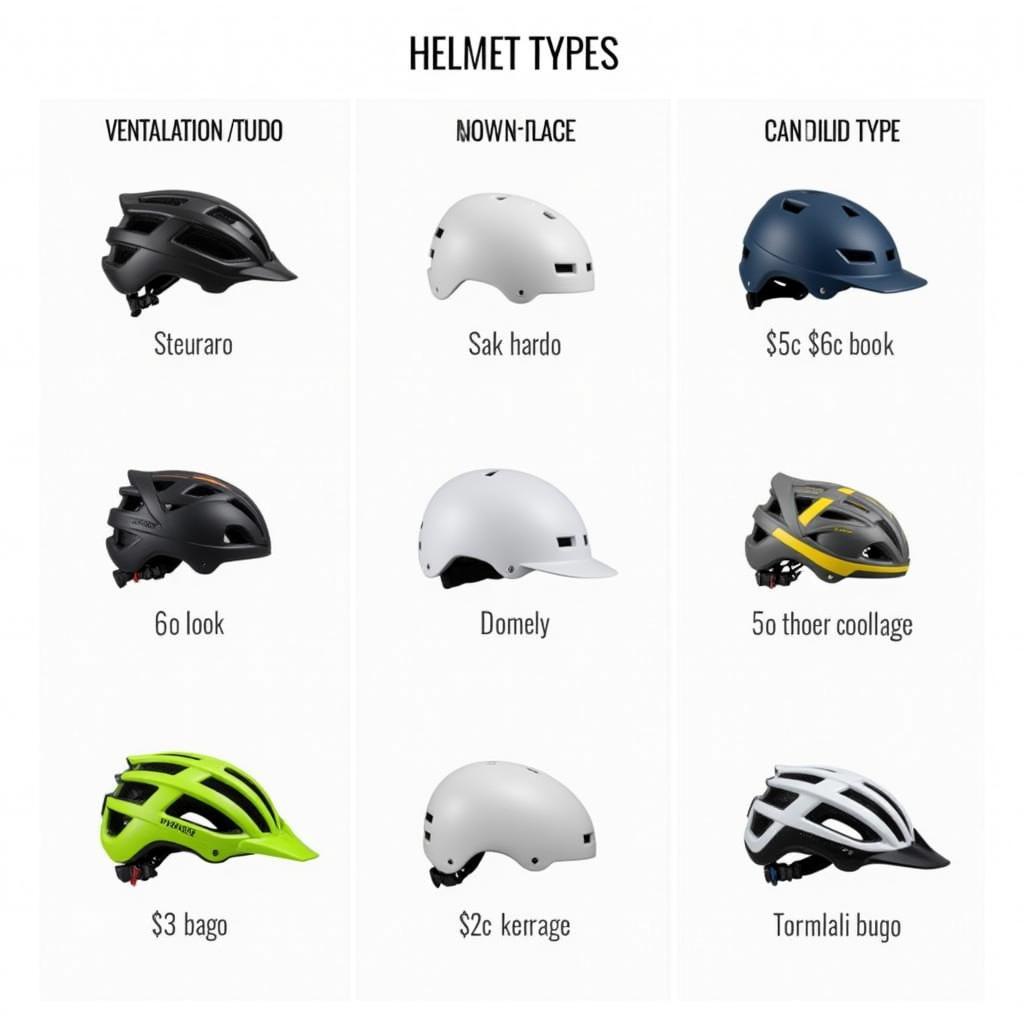Helmets For Horse Riding are non-negotiable for safety. Whether you’re a seasoned equestrian or just starting out, understanding the importance of a well-fitting, certified helmet is crucial. This guide will delve into everything you need to know about choosing and maintaining the right helmet for your riding needs.
Why are Helmets for Horse Riding So Important?
Head injuries are a serious risk in horse riding. A fall from even a relatively short height can cause significant trauma.  Horse rider falling and potentially hitting their head, highlighting the need for a helmet. Helmets for horse riding are designed to absorb impact and protect your skull from injury. They are your first line of defense against concussions and other serious head injuries that could have life-altering consequences. Don’t underestimate the importance of this vital piece of equipment.
Horse rider falling and potentially hitting their head, highlighting the need for a helmet. Helmets for horse riding are designed to absorb impact and protect your skull from injury. They are your first line of defense against concussions and other serious head injuries that could have life-altering consequences. Don’t underestimate the importance of this vital piece of equipment.
Choosing the Right Helmets for Horse Riding
Selecting the right helmet can feel overwhelming, but with a little guidance, you can find the perfect fit. Firstly, ensure the helmet meets current safety standards, such as ASTM F1163 or VG1. best horse riding helmets These certifications guarantee the helmet has undergone rigorous testing. Next, consider the fit. The helmet should sit snugly on your head without being too tight. It shouldn’t wobble or move excessively. Adjust the harness system for a secure and comfortable fit. Finally, think about ventilation. A well-ventilated helmet will keep you cool and comfortable, especially during long rides.
 A diagram showing how to measure head size for a horse riding helmet and demonstrating the correct fit of the harness.
A diagram showing how to measure head size for a horse riding helmet and demonstrating the correct fit of the harness.
Caring for Your Horse Riding Helmet
Proper care will prolong the lifespan of your helmet and maintain its protective qualities. Avoid dropping your helmet or exposing it to extreme temperatures. Clean it regularly with a mild soap and water solution. Never use harsh chemicals or solvents. Inspect your helmet regularly for any signs of damage, such as cracks or dents. horse riding helmets for kids If you notice any damage, replace the helmet immediately.
What are the Different Types of Horse Riding Helmets?
There are various types of helmets designed for different disciplines. Some common types include schooling helmets, show helmets, and cross-country helmets. Each type offers specific features and benefits. For instance, cross-country helmets offer enhanced protection for the back of the head. Choosing the right type will depend on your riding style and the level of protection required.
How Much Do Helmets for Horse Riding Cost?
The price of helmets for horse riding can vary significantly. You can find affordable options that still provide adequate protection, as well as higher-end helmets with advanced features. cheap horse riding helmets While it might be tempting to go for the cheapest option, prioritize safety and invest in a helmet that fits well and meets the required safety standards. Remember, your head is worth protecting!
 A display of various horse riding helmets, including schooling helmets, show helmets, and cross-country helmets.
A display of various horse riding helmets, including schooling helmets, show helmets, and cross-country helmets.
“A properly fitted helmet is the most important piece of safety equipment for any rider,” says renowned equestrian safety expert, Dr. Amelia Carter. “Never compromise on safety. Invest in a quality helmet and wear it every time you ride.”
Helmets for Riding Horses: Making the Right Choice
Choosing helmets for riding horses is an investment in your safety and well-being. Remember to prioritize fit, certification, and comfort. helmets for riding horses Don’t let cost be the deciding factor when it comes to protecting your head.
In conclusion, helmets for horse riding are essential for every rider, regardless of experience level. Investing in a quality helmet and ensuring it fits correctly is a crucial step towards safe and enjoyable riding.
FAQ
- How often should I replace my horse riding helmet? Every 5 years, or after any impact.
- Can I wear a bike helmet for horse riding? No, bike helmets are not designed for the specific impacts associated with horse riding.
- How do I clean my horse riding helmet? Use mild soap and water, avoiding harsh chemicals.
- What is the most important feature of a riding helmet? Proper fit and current safety certification.
- Where can I find certified horse riding helmets? Reputable tack shops and online retailers.
- How tight should my riding helmet be? Snug but not uncomfortable. It shouldn’t wobble or shift excessively.
- What are the different safety standards for riding helmets? Look for ASTM F1163 or VG1 certification.
“Regularly inspecting your helmet for damage is just as important as wearing it in the first place,” adds Dr. Carter. “A small crack can compromise the integrity of the helmet, reducing its protective capabilities.”
Need more themed helmets? Check out our horse riding helmets that’s hazbin hotel theme.
For further assistance, please contact us at Phone: 0772127271, Email: [email protected], or visit us at QGM2+WX2, Vị Trung, Vị Thuỷ, Hậu Giang, Việt Nam. We have a 24/7 customer service team available to help.